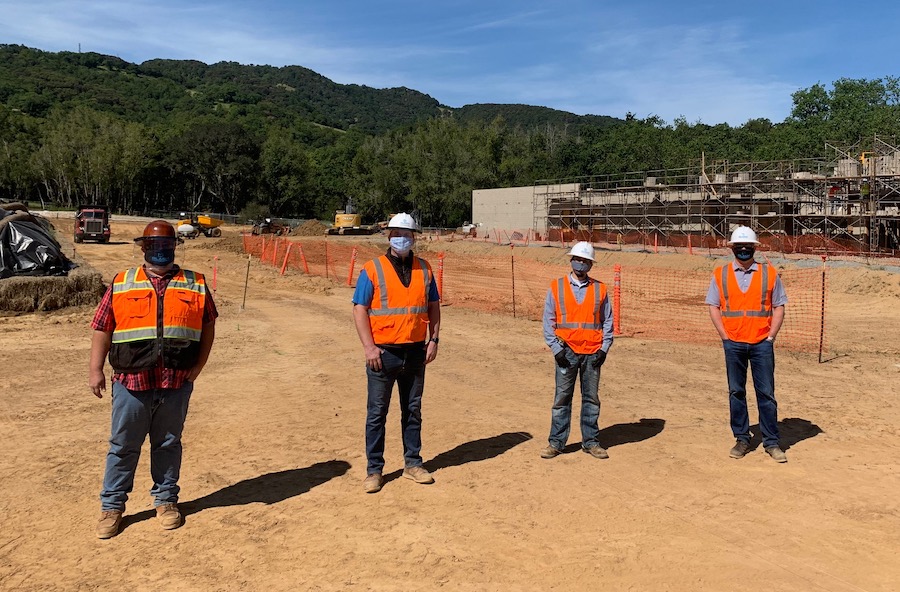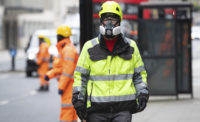A three-month analysis of people tested for COVID-19 in Los Angeles County indicates that those sampled who are shown as having employment in the construction sector are infected with the virus at a rate higher than those in other business groups—a finding disputed by industry officials.
The study by testing firm Curative Inc. based in San Dimas, Calif., was conducted from August to October,
Co-author Dr. Jeffrey Klausner, an infectious disease specialist, who is a professor at UCLA’s School of Public Health and medical director for Curative COVID-19 testing, says the study tracked more than 730,000 COVID-19 tests. Of those tested, 529 identified as "construction workers" had a positivity rate of 5.7% for asymptomatic individuals and 10.1% for those with symptoms, highest among others identified as working in such sectors as health care, corrections, food services and media.
The study did not offer any other details on occupations of those in the construction group tested.
Peter Tateishi, CEO at Associated General Contractors of California, says the study doesn’t prove more construction sector employees are getting COVID-19 than those in other industries.
He says the report “alludes that it is at construction sites where workers are getting COVID-19. But the study also says it is not able to track dining or social events, so are they [industry employees] getting COVID-19 at a party or by going grocery shopping? Again, that’s the result of not being able to understand the ‘why’ behind the data.”
Klausner says the study was launched out of concern that the construction industry “might not be aware that many workers may be infected and coming into work infected." He says that people in other industries also eat out and go grocery shopping, but their rates are lower.
Klausner says those listing employment in food services had the next highest infection rate at 3.8%, but the study reports 53,372 people in that group's survey pool.
For symptomatic cases, those listed as "correctional workers" had positivity rate, at 12.5%, with 131 people in the survey pool, compared to 10.1% for those in the construction sector, according to the report's data.
Tateishi called the study a “conclusion without looking at the science.”
The study also should have been certified with a peer review, he added.
Keith Craw, vice president of operations for Blach Construction in California says he was disappointed by the study.
“We absolutely encourage, support and agree with the importance of testing, but it is clear that the results of this study have been misrepresented and misunderstood. Noting the numbers of tests examined that are attributed to the industry, 07%, the number of industry employees in the sample "barely registers,” Craw says.
Klausner suggested that the higher industry infection rate was related to workers' lack of sick leave. Tateishi says federal law has required employers to provide workers with sick days due to the coronavirus since April 1.
“I do think it’s dangerous and reckless to allow the public to believe that the construction industry has seen this huge increase that it has not,” he says.
Craw said in March his company put in place stringent COVID-19 protocol and practices that stipulate daily certifications, safety checks, increased PPE and sanitation, as well as distancing and virtual meetings whenever possible. “Our workers were quick to adapt, have acclimated and this is how we now do business,” he says.
Klausner says he would like to see more testing, and another larger study that would compare state by state rates of infection in the industry.
“That’s what the findings support. It’s worthwhile to do further evaluation of testing rates." he says.




